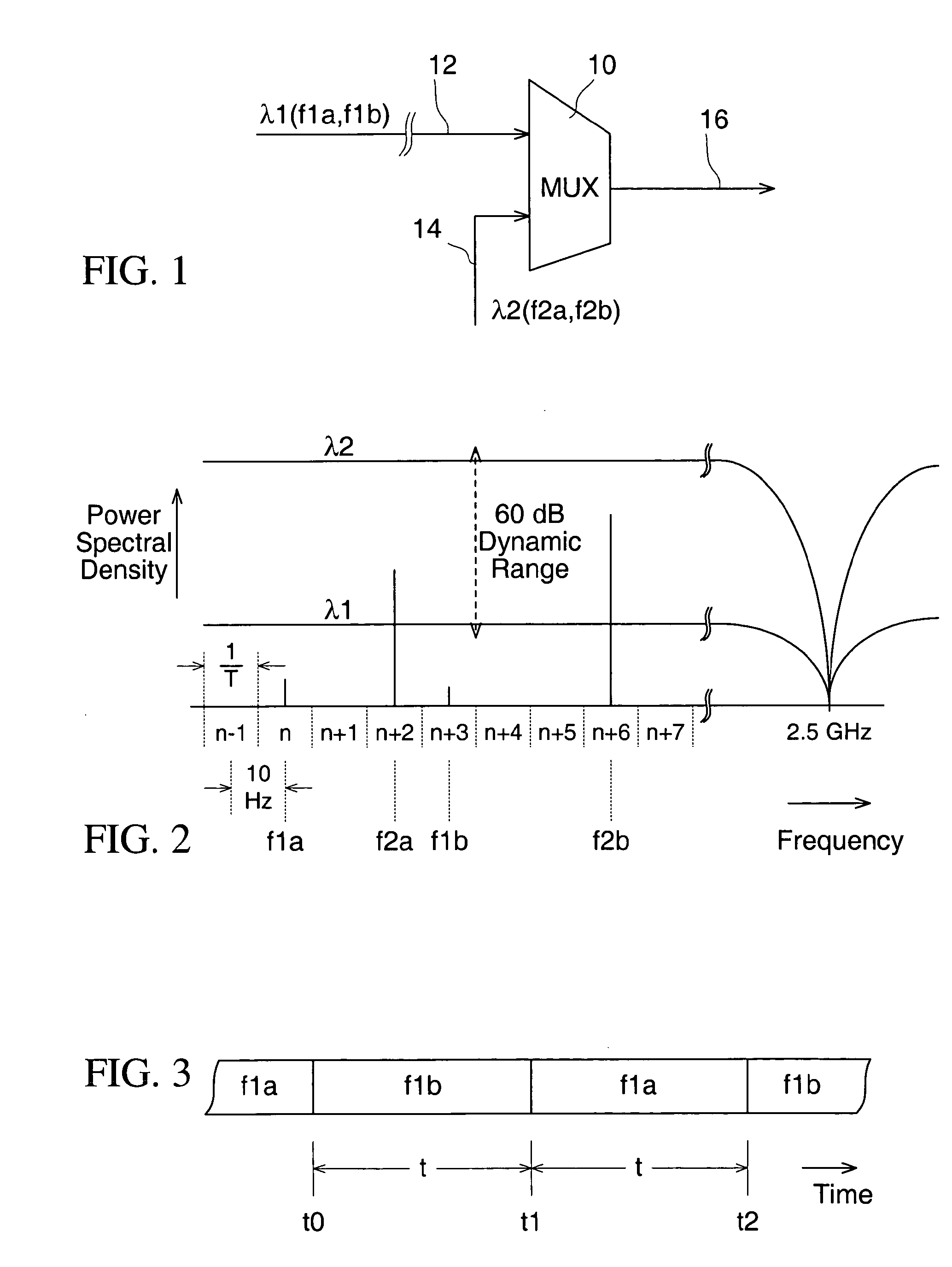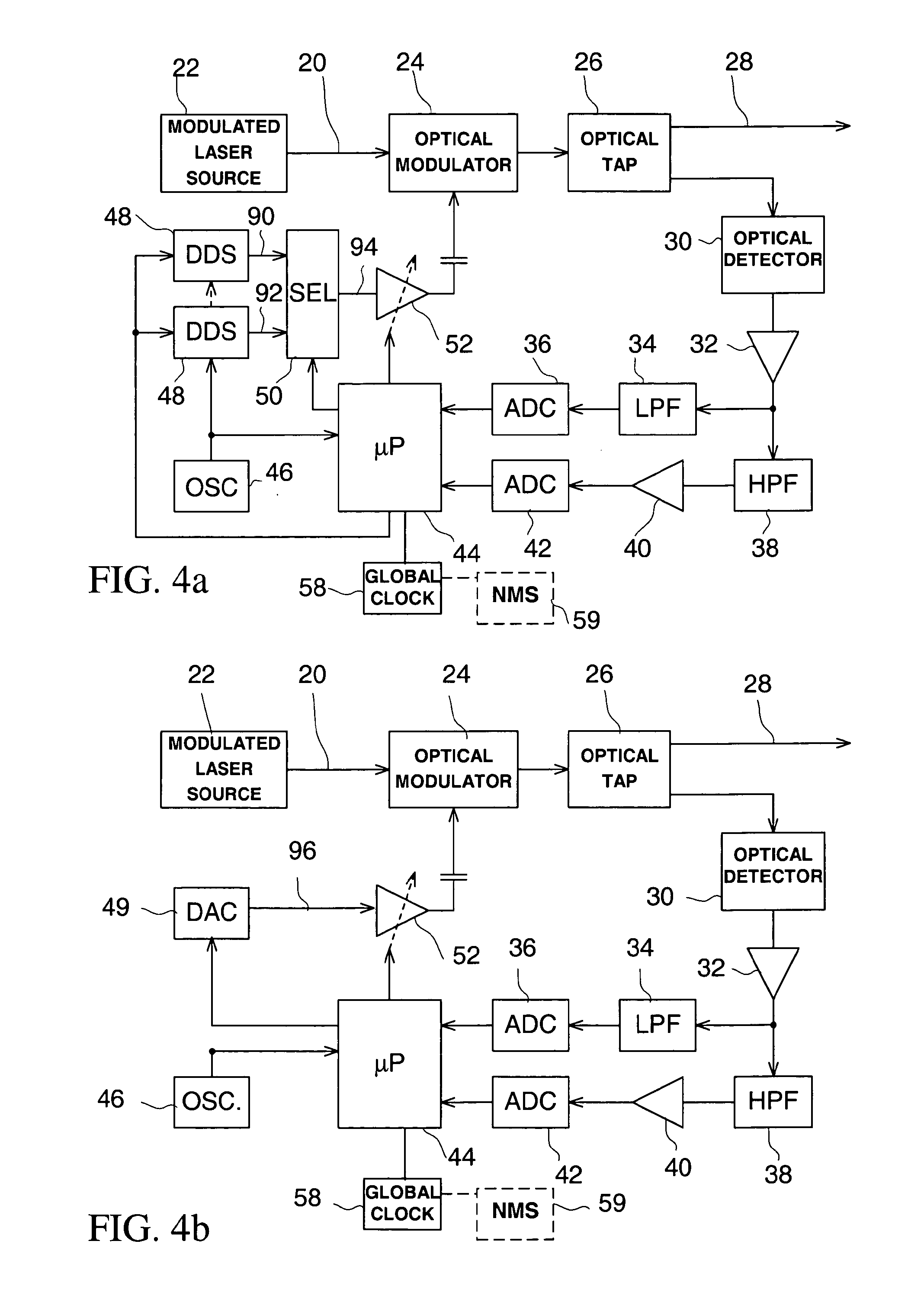Signal identification in optical communications networks
- Summary
- Abstract
- Description
- Claims
- Application Information
AI Technical Summary
Benefits of technology
Problems solved by technology
Method used
Image
Examples
Embodiment Construction
[0045]As indicated initially above, embodiments of the invention are described below in the context of an optical WDM network, but the invention is also generally applicable to, and the described embodiments of the invention may be adapted for operation in, other types of communications network.
[0046]As described above, one disadvantage of known channel identification proposals is that each optical channel is identified by a respective dither tone, and there is a limited number of dither tone frequencies and hence a similarly limited number of optical channels in the WDM network. While this number can be increased by increasing a frequency range over which the dither tones extend and / or by decreasing a frequency spacing of the dither tones within this range, such steps involve other disadvantages, such as an increased potential for interference with data signals and / or increased difficulty in distinguishing the dither tones from one another.
[0047]In embodiments of this invention, th...
PUM
 Login to view more
Login to view more Abstract
Description
Claims
Application Information
 Login to view more
Login to view more - R&D Engineer
- R&D Manager
- IP Professional
- Industry Leading Data Capabilities
- Powerful AI technology
- Patent DNA Extraction
Browse by: Latest US Patents, China's latest patents, Technical Efficacy Thesaurus, Application Domain, Technology Topic.
© 2024 PatSnap. All rights reserved.Legal|Privacy policy|Modern Slavery Act Transparency Statement|Sitemap



